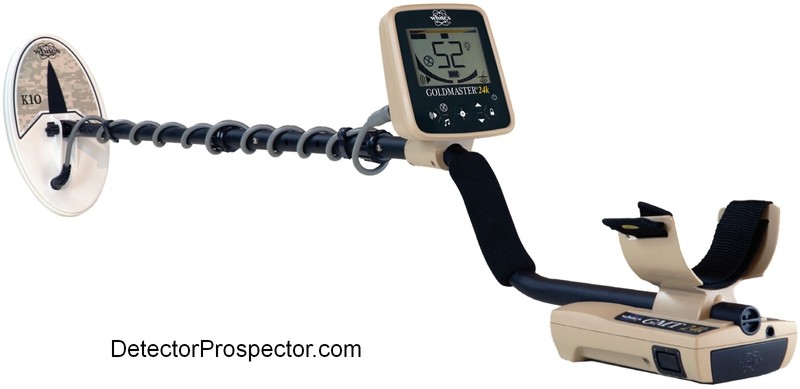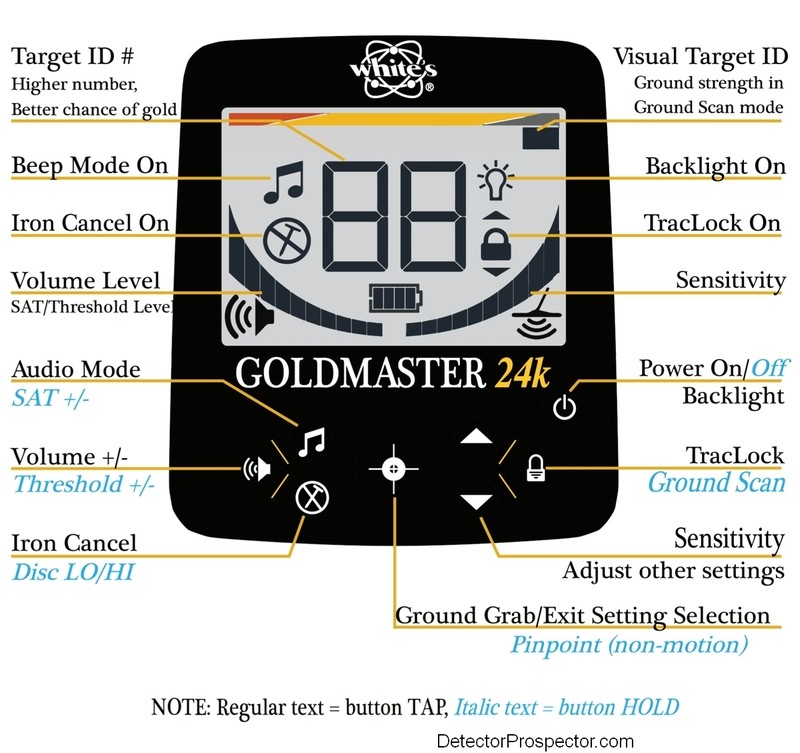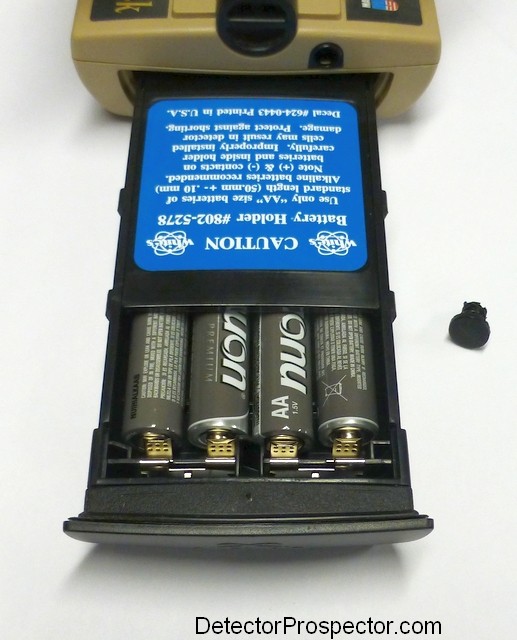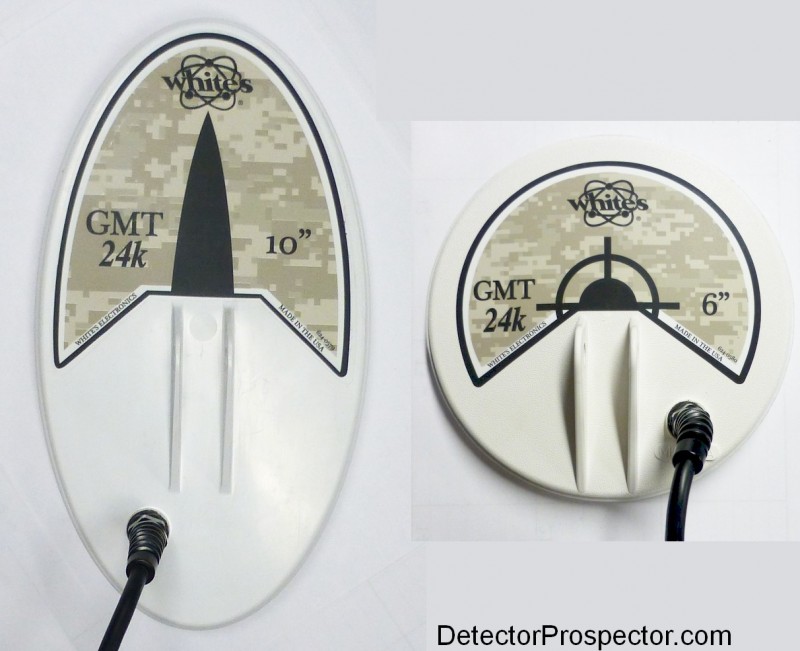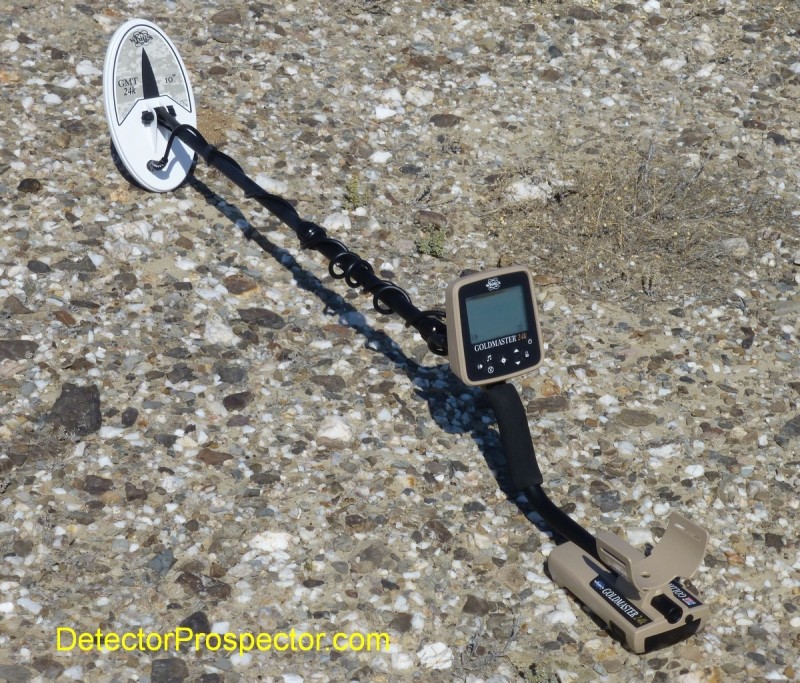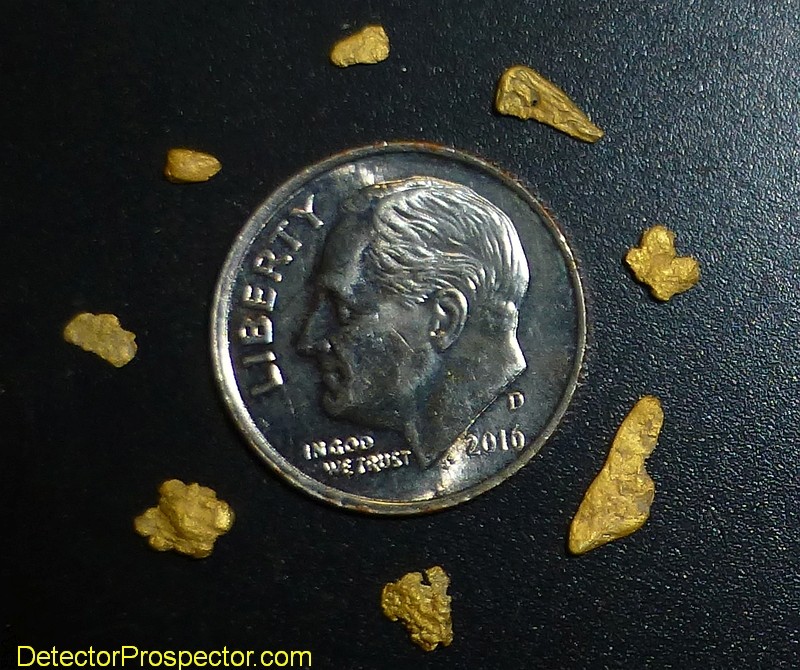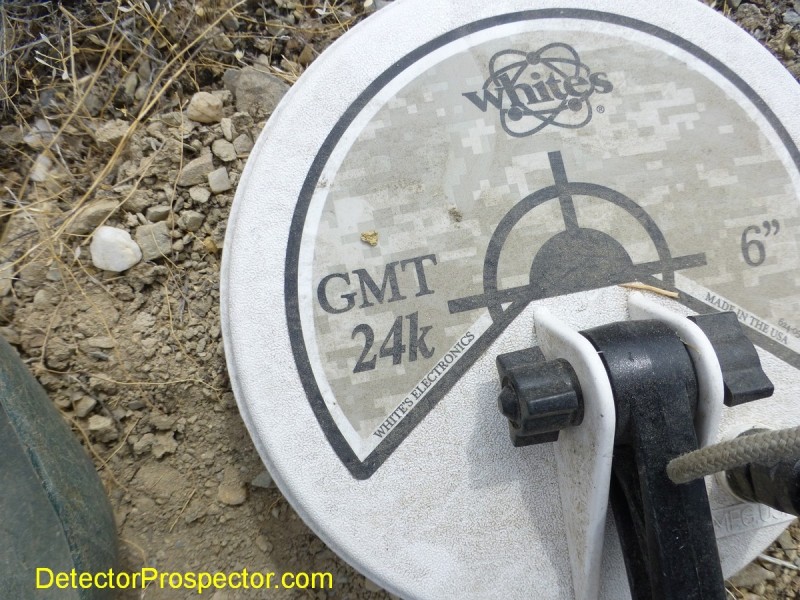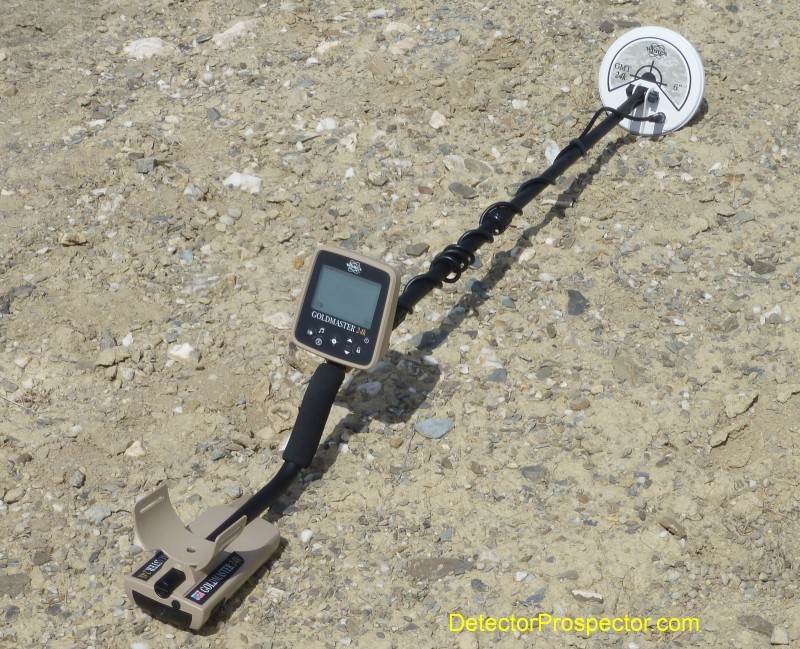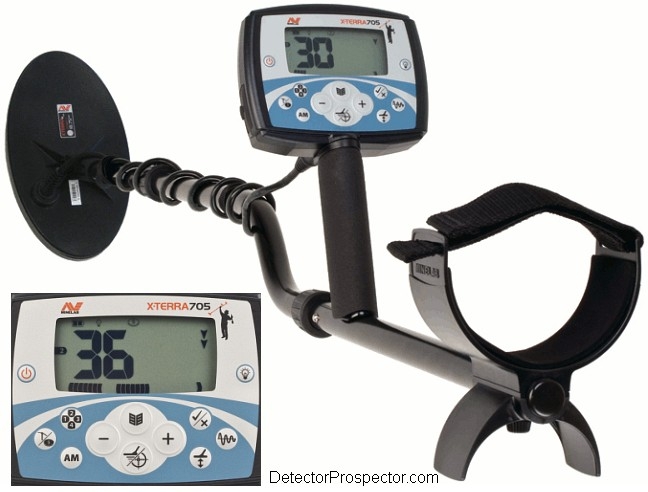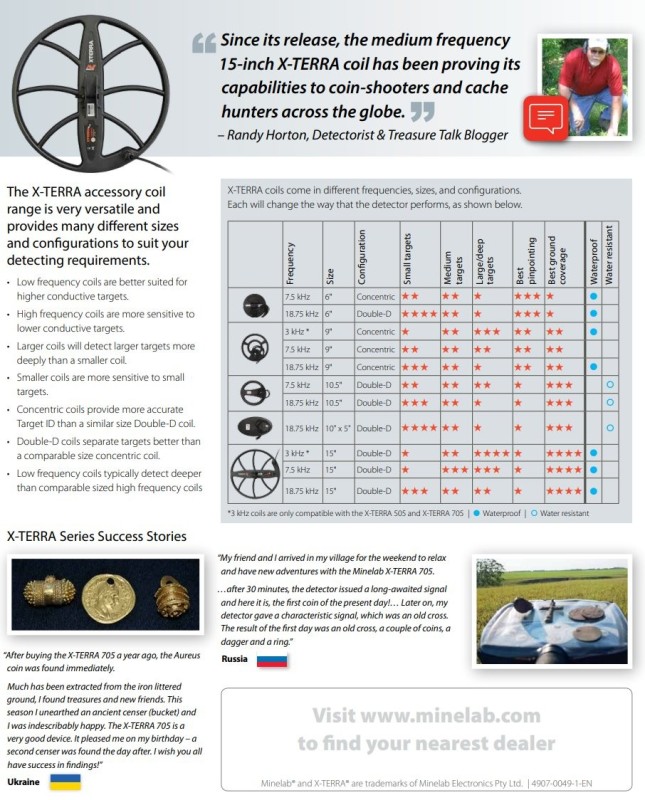-
Posts
19,790 -
Joined
Content Type
Forums
Detector Prospector Home
Detector Database
Downloads
Everything posted by Steve Herschbach
-

A Video Explaining The Garrett Focused Core DD Coils
Steve Herschbach replied to phrunt's topic in Garrett Metal Detectors
No worries I’m just being a whiner As long as the info gets out one way or the other that’s all that counts, and simple reality now it’s mostly YouTube, Facebook, Instagram etc that people look to for information. -
Forum traffic increases in the off season, and drops off when people are actually out doing it.
-
Well you know what Bill, I think that is a worthy challenge. I think I'll just go detecting, and post finds, and call it good. Stay away from "look what this detector found" and focus more on "look what I found". I mean really, is it the detector finding the stuff, or me? You'd swear we are all mindless tools used by the detector to read most posts, not the other way around.
-

A Video Explaining The Garrett Focused Core DD Coils
Steve Herschbach replied to phrunt's topic in Garrett Metal Detectors
It was used on the ATX. I noted to Garrett that it is critical for people to know about these coils, as people just think they are standard DD coils. I made quite a big deal about the fact this coil has been around for awhile, but that Garrett has never bothered to explain it to anyone. I mean seriously, when do companies pass on touting something new and coming up with new acronyms for it? I was calling it the Bullseye DD (Garrett now owns the White's rights to that name) but they just recently settled on Focused Core. Probably did not want it confused with the Bullseye pinpointer. But yeah, I'll take credit for this finally being explained as an exclusive Garrett option. I did chuckle over the brand new thing. Yes, the name is new but not the design. I've explained this all in detail previously months ago, including the ATX connection. Mentioned it in several threads. Went out of my way to highlight it as a must read, pinned it to the top of the forum, you name it. Just proves nobody actually reads my stuff... I have kind of a why bother feeling about that. 🤷🏼♂️ Maybe if it is not posted on YouTube it's not real, so I've added the new video to my past posts. And added "Focused Core" where appropriate replacing my previous Bullseye moniker. -
I highly recommend new Axiom owners or anyone just interested review the Essential Information on the Garrett Axiom pinned at the top of the forum. Some of the information is quite critical to getting the best results out of the Axiom. Anyone can just pick it up and do well, but knowing things like the difference in the Garrett coils gives you that extra edge.
-
If you are talking about the Axiom, the Focused Core (FC) DD is the only kind Garrett makes for it. You should know this as I’ve explained it at length previously on the forum and gone out of my way to highlight the fact. Axiom Focused Core (FC) DD Coils from Garrett Metal Detectors on Vimeo.
-
In general it seems there is more and more talk about detectors on the forum, and less and less talk about their actual use. Tons of opinions. Videos are test fests with boards and styrofoam or this versus that on planted targets. Posts by people making actual finds from Australia have all but disappeared on all forums. Is it finds depleting, or people getting more secretive about their detecting? Probably both. Personally I’ve not gone detecting since October and probably won’t start up much until April. I do plan on using the Axiom near exclusively this year for coin hunting in parks, beach detecting for jewelry, and of course nugget detecting. As soon as my nearest park thaws I’ll be digging soft low tones looking for silver. Tahoe beaches soon after that. My target gold areas are at 6000 feet in the Sierras so that is later. But hey, it’s a Garrett, and so uptake is slow due to skepticism, and an unfortunate exchange rate fueled price penalty overseas. It’s a good detector and pretty easy to like, but the reality is the “performance at all costs” crowd more than likely will stick with Minelab. Then you have to hope the Axiom buyer is even the type of person to find forums and post. So I expect it to just be me and a few other go against the flow types that post here now and then. I mainly was trying to put out as much as I could about how to get going with the Axiom, but at this point I have covered all the bases I intend to and unless there is some new question it’s mostly a matter of referring people to posts I’ve already made. I have no desire though to be Mr. Axiom though so hopefully some more of users do show up sooner or later and post their thoughts and experiences. Anything I post always is tainted by that “oh he worked with Garrett on that” smell so I’m as interested in what others think just as much as anyone. Maybe more so.
-

Backpack For Ctx 3030 With A 17 In Coil?
Steve Herschbach replied to stateguy's topic in Minelab Metal Detectors
There are a zillion options to choose from. Camelback style bags with built in water delivery are very popular. I use one myself but it is a small one that just contains my needed gear, not the detector itself, which goes in a separate travel bag. But one pack to act as travel bag and backpack is certainly an option also, or anything in between. The Deus 280 at 26 inch length should be able to hold a 17" CTX coil no problem. I'd be more concerned about the 13.5" width of the coil. Looks like a really nice pack but for $150 there are lots of others also. -

Quest V80 Quick Start Guide
Steve Herschbach replied to F350Platinum's topic in Quest Metal Detectors
I weighed all my detectors on postal scales when I used to do my detailed reports on them, and I often found manufacturers understated weights. That's the nice way to say it. Some did it more than others. Nokta/Makro was a common offender in the past at least. -

Goldmaster 24K Added To Detector Database
Steve Herschbach replied to Steve Herschbach's topic in Garrett Metal Detectors
One for sale in the forum classifieds right this minute, but you would have to buy a GMX Sport to get it. -

Detailed Review Of White's Goldmaster 24K
Steve Herschbach posted a topic in White's Metal Detectors
The White's Goldmaster 24K is a new 48 kHz gold nugget detector released in the fall of 2018. Production models started shipping in September and White's forwarded one to me to check out. What follows are my thoughts after a couple days of detecting for gold on several northern Nevada nugget patches. The Goldmaster 24K marks a break with the past as White's moves from the older metal box designs of the past to newer plastic cases. The Goldmaster 24K physical design is the latest in the evolution of the MX series. The control box itself is derived directly from that used on the White's MX5. The control pod / display originated with the TreasurePro and later used in the MX Sport and MX7 designs. Basically the Goldmaster 24K is in the same housing and rod design as the White's MX7. Manufacturers face a difficult design choice these days. In general users want metal detectors to be as light as possible. However, weight is not everything - balance matters every bit as much. The problem is that a metal detector search coil is basically a weight on the end of a long stick. Coils can only be made so light due to engineering constraints requiring a certain amount of copper wire, and a reasonably robust coil housing. The coil therefore has a lot to do with determining the final ergonomics of the detector. If the coil weight is not balanced at the other end with some kind of offsetting weight, the detector is nose heavy. This in turn creates torque everytime the detector changes directions, which puts stress on the operators arm. The detector can be made as light as possible, or can be perfectly balanced, but it is almost impossible to do both in one detector. Any detector that weighs less than 3 pounds is almost certain to be nose heavy because enough weight does not exist to balance the weight of the coil. In order to have enough weight to work with it appears the minimum is about 3.5 lbs for detectors that are well balanced. The extra weight is almost always in the form of a battery box located under the elbow. White's has gone this route is the MX series designs with a battery box holding 8 AA batteries under the elbow acting as a balancing weight. This results not only in a well balanced detector but a detector with enough batteries to operate for multiple days between charges or battery changes. White's Goldmaster 24K metal detector for gold prospecting Another big choice manufacturers have to make these days is whether to use a straight rod or a "S" rod design. Users tend to be evenly split as to which they prefer, and so this is a choice the manufacturer cannot possibly win. About half the people are going to be unhappy whichever way you go. Industrial type users like beach hunters and prospectors tends to prefer straight rods. Coin, jewelry, and relic hunters seem more inclined to "S" rods. I have used many detectors with either setup, and have been happy with both or unhappy with both. The deciding factor for me has been more about the exact size, shape, and angle of the hand grip than the actual rod design. I do not have over-sized hands, and so I tend to prefer a smaller diameter grip. Other people like a larger grip. I went into all that detail to be sure the reader understands that weight and balance is very much a personal preference item. Getting a detector to fit right for everyone is like making a pair of boots that fits everyone. You can't do it. Therefore when I say that the MX physical design as employed in the Goldmaster 24K is a very good fit for me don't take that as meaning it will be great for you. Yet it is a very good fit for me, and quite comfortable on my arm, with just enough forward weight to keep my elbow in the arm cup without having to use the arm strap. The design is also lighter than the White's GMT by nearly half a pound, so the Goldmaster 24K is both well balanced and lighter than what came before. The Goldmaster 24K with 10" elliptical coil and with batteries installed weighs 3 lbs 7 oz (3.4 lbs) or 1562 grams on my digital postal scale. The Goldmaster 24K has an IP54 rated enclosure that has a high level of protection against dust particles, and a fair amount of protection against water. The coils are waterproof, but the detector itself is not submersible, so keep that display pod out of the water. The "S" rod is a three piece design with excellent quality twist locks that create a firm, wobble free rod assembly when fully engaged. The armrest position is not adjustable but it is well placed. The 24K is powered by eight AA batteries in a battery holder that pops out of the rear of the battery box. The 24K is supplied with eight alkaline AA batteries, but rechargeable batteries may be substituted for use in the battery holder. The 24K can get up to 40 hours operation using high quality alkaline batteries and while using headphones (external speakers use more power). The Goldmaster 24K does have a speaker built into the rear of the display pod, and there is a female 1/4" headphone jack directly above the battery door. White's thoughtfully includes a small plastic plug to insert into this hole when not in use. White's 24K battery holder and headphone jack location The Goldmaster 24K comes with a 5.5" x 10" DD coil as the stock coil. A 6.5" round concentric coil is available as an option. Scuff covers for the coil are not included with the detector or when you buy an accessory coil - they are separate optional items. The 5.5" x 10" DD search coil weighs 14.5 oz or 412 grams. The coil is 1" thick. The 6.5" round concentric coil is 3/4" thick and weighs 13.1 oz or 370 grams. Therefore the 24K when outfitted with the 6" concentric weighs in at 3 lbs 5 oz (3.3 lbs). White's possibly has a 13.5" x 8" DD available soon that weighs 1 lb 8 oz or 682 grams. Finally, a version of the 4" x 6" Shooter DD is in the works also. Neither of these coils is available for sale as of March 2019 (edit - they are now), so for now the GMK has one accessory coil (the 6" concentric) available for purchase. Do note that all pre-existing coils for other White's Goldmaster or GMT models are not compatible with the Goldmaster 24K. The 24K pumps about 50% more voltage to the coils than previous models, requiring tighter tolerances in the new coils. The coil connector has been changed to prevent confusion. 5.5" x 10" DD search coil and 6.5" round concentric coil for White's Goldmaster 24K The Goldmaster 24K shares many functions with the White's GMT model but there are differences. The most obvious being that the GMT uses knobs for control adjustments. The 24K uses a sealed touchpad which is more water and dust resistant, but some controls have secondary functions that necessitate having the Quick Guide near at hand when learning the detector. The 24K like the GMT does of course have a sensitivity control, and like on all hot VLF detectors it is a critical control. The solution to most problems regarding metal detector instability, or interference, is to reduce the sensitivity. The 24K features both automatic ground tracking, or a fixed ground balance, adjusted via a tap of a "ground grab" button. In this case the pinpoint button doubles as a ground grab when given a quick tap. Ground tracking can be a great function for variable ground and people new to detecting. Personally I prefer to lock the ground setting (via the "Lock" button) and update it manually via the ground grab function. I did use the ground tracking however, just to try it out. It is lightning quick, taking just a pump or two to track into the ground. Ground grabs are instantaneous. The White's GMT allowed for a locked ground balance to be tweaked up or down manually, via plus or minus buttons on the control pod. The 24K takes a slightly different route by allowing a "ground balance offset" to be dialed into the detector. The ground balance offset is a powerful feature, and so deserves some explanation. Prospectors often prefer manual ground balance because they can choose their own setting that for various reason might be different than what a machine will choose using a preset function like ground grab. Ground grab may be set to deliver a very neutral ground balance. The prospector may prefer that the balance be slightly positive to help enhance tiny nugget signals. They may want to choose a ground balance setting halfway between the ground itself and some pesky hot rock, which may mean adjusting either positive or negative from the neutral setting. This might require that the operator first do a ground grab, then hit the plus button a couple times to manually offset the ground balance. The 24K has a "Follow The Black Sand" mode like on the GMT, but it is now called Ground Scan. Ground Scan is enabled by pushing and holding the ground balance "Lock" button. While in Ground Scan the "Up" and "Down" buttons create a ground balance offset. This offset is retained when you leave Ground Scan mode, and will be applied both when doing a ground grab, and even while in ground tracking mode. The Ground Scan / Follow The Black Sand thing is intended to allow a prospector to locate and trace shallow magnetic sand deposits, that might indicate potential gold concentrations. This is a rarely used function, but including the offset ability means this function may be accessed more often just to create these ground balance offsets. With the GMT you could ground grab, and then manually tweak the setting, but the tweak had to be applied every time the ground grab is performed. Now the offset can be dialed in and automatically applied. The real zinger however is that this also allows the 24K ground tracking function to be directly tweaked - very, very rare indeed. Almost every detector I have ever used has a preset ground tracking circuit that puts the ground balance where it wants, end of story. With the White's Goldmaster 24K you can create a tracking offset, to deal with hot rocks in a way that simply can't be done with most other ground tracking systems. Really cool White's! White's Goldmaster 24K detector with optional 6" concentric coil The 24K has the volume control the GMT lacks, which is quite handy for those who want to run without headphones, but not necessarily at full volume. There are 8 levels of volume plus two boost settings, Boost 1 (b1) and Boost 2 (b2) that kick in when you adjust the volume control above 8. The GMT features a Variable Self Adjusting Threshold (V/SAT) control, that governs the rate at which the audio resets itself when passing over a target, or ground variations. The GMT has a knob that runs from 1 to 10, and on the Goldmaster 24K the SAT setting has been simplified to three settings - off, medium, and fast. The default setting of medium is all most people will ever need. However, in extreme low mineral ground the off setting can enhance weak signals, although the detector may need very careful coil control, and slower coil sweeps, to allow the circuit to keep up. Conversely, extreme high mineral variable ground may require the fast setting to smooth out variations in the ground signal. The threshold control itself is interesting. Normally on an old school threshold based all metal detector the all metal mode, and threshold, are one and the same. The Goldmaster 24K like some newer digital models appears to employ what is referred to as a "reference threshold". The threshold may be adjusted, but appears to be disconnected from the all metal channel, and is instead layered on in parallel. The SAT control above does directly affect the all metal channel as described above. Yet it does what it does whether the threshold is present or not. Reference thresholds often exist for the sole purpose of nulling, or going silent, when passing over items that have been discriminated out, but this does not happen when the Iron Cancel (see below) is engaged. While bench testing in all metal with the SAT set at zero, I thought I might just be able to hear a waver in the threshold. I would be interested in hearing from other nugget hunting experts on this matter, because in my opinion the threshold as it exists on the Goldmaster 24K, is not coupled to the all metal channel in the manner one would observe on the GMT for instance. The only effect seems to be with threshold completely off the 24K will no longer give any ground feedback at all if out of ground balance. Based purely on what I am observing in actual use I would say the 24K is a silent search detector, with a reference threshold added, as opposed to a true threshold based all metal circuit like on the GMT. The difference is subtle, but there for my ear at least, and if there is a connection there between threshold and all metal channel, it is too minimal for me to discern while in actual use. Now we get into the real meat of where the GMT and Goldmaster 24K part ways. The GMT has an iron (ferrous) probability meter as does the Goldmaster 24K. The GMT meter is merely a bar graph - far left means 10% chance of ferrous and far right means 90% chance of ferrous. Somewhere in the middle means 50% chance of ferrous. The Goldmaster 24K puts a blacked out block at the top of the screen with similar positioning, but the actual percentage numbers display out as a "target id" number. This is not a target id number as thought of on coin detectors, but instead intended to be a display of the odds that an item is non-ferrous. White's Goldmaster 24K controls and display screen If you look at the display above there is a colored bar at the top of the 24K LCD meter - red on left, wide yellow middle, and dark gray on right. The three colors taper one into the other to indicate overlap. The red on the right indicates the probable ferrous range, and dark gray indicates items reading too high to probably be gold, but more likely a copper, brass, or silver item (high conductors) or certain ferrous items that "wrap around" and "read high". These include hardened steel items like large bolts, almost any washers, ax heads, etc. In theory this scale could be used for coin detecting, but the coins with few exceptions like a nickel tend to bunch up all on the right. The intent really is to be more of a ferrous/non-ferrous meter, but I do think I could make do with this for some general detecting scenarios. In air tests a nickel read 88, zinc penny 95, dime 96, and quarter 97. The Goldmaster 24K has an Audio Mode button, that engages and disengages something analogous to the "Iron Grunt" feature on the GMT. Engaging the Audio Mode replaces the normal VCO type "zippy" audio with a simple high or low beep. Any meter reading below 50 will deliver the low "ferrous" beep and anything 50 or higher a high "non-ferrous" beep. Since the gold probability range runs much lower, this is helping the operator concentrate only on the high probability targets - anything with over a 50% chance of being non-ferrous. This "over 50% equals non-ferrous" audio mode could be useful for direct hunting in some situations. However, when pushing the detector hard in all metal mode, and then switching the Audio ID mode on, I found that I would have to reduce sensitivity, or encounter quite a few false signals in mineralized ground. That being the case I was more prone to using this as a ferrous check, by engaging the button for a quick audio reading, then back again to all metal mode. The Audio Mode as I described it above acts much like the Iron Grunt feature on the GMT, but on the GMT the ferrous audio alert only kicks in when there is an 85% or greater chance of the item being ferrous. It is not a certainty on how the percentages correlate, but the 24K audio ferrous tone does kick in at readings of 50 and below (greater than 50% chance of being ferrous). Borderline gold targets can read lower than this however, down into the 40s and even lower. A 30% chance of gold is still pretty good odds. So what to do now except read the numbers? White's has addressed this with another control, the Iron Cancel button. Engaging Iron Cancel activates an adjustable iron rejection setting. The default is for anything reading 15 or lower to simply not beep. This corresponds to the solid red area on the bar graph display at the top of the meter. Borderline or mixed content items will break up or give erratic readings. The best part however is that the setting can be adjusted from 0 all the way up to 62. This allows the operator to completely block out a chosen range of low end readings that is either more conservative or more aggressive than the Audio Mode preset. As noted before, the threshold, if any is used, will not blank over rejected items - they are simply ignored. I noted above that highly conductive items and some steel items can read at the very high end of the scale, typically 95 and above. If the goal really is gold, it is very unlikely that readings this high will be gold, and so White's also offers the ability to block out this high end range. Tapping the "lock" button while in the ferrous adjustment mode, will automatically block all readings of 94 and higher, which is where most iron high end false signals will occur. Other controls on the Goldmaster 24K - a pinpoint function, frequency shift to help avoid electrical interference, or for running two 24Ks close together, a backlight for the meter for low light conditions, and finally, a factory reset. To perform a factory reset, hold the down arrow when turning the detector on. FD will display on the screen when the detector powers on. Now press the pinpoint crosshair button. The FD will clear from the screen, and the detector has been reset to default factory values. White's Goldmaster 24K with stock 10" x 5.5" DD coil Now for the part everyone has been waiting for - how does the Goldmaster 24K at finding gold? When I test nugget detectors I tend to concentrate on smaller gold. First, because it is more plentiful, and easier to find in limited time frames for testing purposes. Realistically small gold also challenges the detector the most. A metal detector must be tuned as hot as possible to find very small bits of gold. Yet this also causes problems with mineralized ground and hot rocks. It is not so much the small gold sensitivity that matters, but how the metal detector handles the ground while tuned up for tiny gold. This is why air tests are minimally useful for nugget hunters. They can reveal theoretical information about how small or how deep a detector can find gold under perfect conditions. Air tests give no indication however of how the detector will handle bad ground, and hot rocks, when tuned to the max. A detector can air test extremely well and fail completely in the field. Therefore when you see my metal detector test reports, pay attention to the smallest nuggets I find, not the larger ones. The 10" DD coil is a good all around nugget hunting coil, with DD coils having the advantage for handling difficult ground. It was the 6.5" round concentric that wowed me, however, and after I got it on the detector I really did not want to take it off. The 10" DD will be a better choice for really bad ground, but lacks that magic edge on the tiniest bits of gold. I also appreciate that concentric coils are easier to pinpoint with, and generally have better ferrous identification performance compared to DD coils. One nice thing about the 24K being well balanced is the 13.5" x 8" coil is less nose heavy than would be the case for an unbalanced detector. This is the coil to use for covering ground in search of larger gold nuggets. For medium to milder ground, and the smaller gold, I really do like that little concentric. In particular there is a lot of grass growing in some desert areas, and the 24K with 6" coil was perfect for mowing through the grass to keep the coil on the ground. This is another area where an "S" shaft has the advantage. A straight shaft detector wants to roll to the side when forcing the coil against resistance, where a balanced "S" shaft being in line with your arm does not produce that kind of rollover torque. The 10" x 5.5" DD coil was a little more prone to false signals when bumped hard than the concentric coil, to the point where I could run higher sensitivity with the concentric on this particular ground. The ground in lots of Nevada is rather mild, often with alkali (salt) content, and it may or may not have bad hot rocks. This particular location had two types of hot rocks to deal with. The bottom line is I was able to run the concentric at full sensitivity of 10, and in audio boost 2 (b2) while in all metal mode and SAT set at medium (default). Even with the machine maxed out like this the detector ran well, and as I said before falsed less than the DD coil would if I attempted the same settings. White's new XGB ground balancing system really does seem to do a good job finding a setting that works well with both hot rocks, and the ground, by tracking multiple ground balance points. I liked to engage tracking, run over a mix of ground and hot rocks, and then lock the setting. I was scrubbing and pretty much digging everything. The Goldmaster 24K with the little concentric is hot as a pistol, and as usual if you give me a hot detector I was able to find some really tiny gold. The eight nuggets below weigh a total of 8.3 grains (not grams - 480 grains per Troy ounce). The largest nugget is 1.8 grains and the smallest are in that under 1/10th gain range. Now, none of these were super deep because you can't find tiny gold super deep, but they were all good zippy targets - and I was not using headphones! Gold nuggets found by Steve with new White's Goldmaster 24K - smallest under 1/10th grain The proof is in the pudding, and there is no doubt the Goldmaster 24K can find the gold, and some really small gold at that. I am not going to try and convince anyone that there is some kind of magic breakthrough here - at the end of the day the 24K is a hot 48 kHz single frequency metal detector just like the GMT in many regards. Some oldtimers may still prefer the GMT for its threshold being tightly connected to the all metal channel, while the threshold connection on the 24K is weaker. Although the Goldmaster 24K can be run hot and noisy, all its design features point to a detector that is intended to be set up as quiet as possible, and this may even mean running without a threshold. I did not see any evidence that this would really hurt the performance at all. This kind of quiet hunting tends to appeal more to people new to nugget detecting, especially those who cross over from coin detecting. Add this to the lighter weight and lower cost package, and White's has done a great job producing an alternative to the admittedly long in the tooth GMT. Steve Herschbach DetectorProspector.com White's Goldmaster 24K Data & User Reviews White's Goldmaster 24K Quick Start Guide White's Goldmaster 24K Advanced User Guide White's Goldmaster 24K XGB Ground Tracking Explained White's Goldmaster 24K & GMT Compared Little gold nugget on coil fresh out of the ground -
That’s not what Condor and I am seeing here as it surprised me with actual gold nuggets found in the field. But what we are talking is matter of degree. I’ve already acknowledged the Deus 2 is not the number one pick for a nugget VLF, and if you think it’s far worse than I do in that regard I’ll not argue it. Maybe it sucks worse than I think on small gold, and maybe I’ll get around to double checking things some day based on what you’ve said. Or not. Kind of moot for me since I use a 24K with 6” concentric for tiny gold. For now what you say is good enough for me. I withdraw my comment.
-

Coiltek Now Selling From Their Own Website?
Steve Herschbach replied to Rob Allison's topic in Detector Prospector Forum
Said every older person for the last couple thousand years. -
The predecessor to the X-Terra 705 X-Terra 70 vs X-Terra 705 Some X-Terra 70 and 705 discussion Free Book - Understanding Your X-Terra All forum threads tagged xterra
-
The Minelab X-Terra Pro is a new metal detector introduced in February 2023. It is a fully submersible VLF metal detector aimed primarily at coin, jewelry, relic, gold nugget, and beach detecting. The X-Terra Pro is basically a Minelab Equinox without the simultaneous multifrequency option. Instead, it is a switchable frequency device, allowing the user to choose to run one of several single frequency options. A large difference between this and the old X-Terra series is the ability to do this with a single coil, just the push of a button. The X-Terra Pro is also fully submersible to 16 feet unlike previous X-Terra models. The X-Terra Pro is coil compatible with both the Minelab Equinox and Vanquish series detectors, meaning it actually has a better coil coil selection than either of those options. Minelab X-Terra Pro metal detector Pro-Switch: Switchable Frequency Technology Search modes: 2 x Park, 2 x Field and 2 x Beach Fully Waterproof: Waterproof to 5m (16ft) – IP68 Beach Performance: Saltwater Capability Light and Compact: 1.3 kg (2.9 lb) and 63 cm (25 in) Audio control: 5 Audio Modes with configuration options Choice of coils: V12X (included), V8X & V10X (Accessory). Also compatible with all Equinox series coils Lighting and Vibration: Control Pod Flashlight, Red Backlight Display, Backlit Keypad and Handgrip Vibration Loud and Clear Audio: Built-In Speaker (included), Low Latency Wireless Headphones with Wired cable. Waterproof Headphones Optional Built to Last: Rugged construction and up to 3-year Warranty Minelab X-Terra Pro User Manual Minelab X-Terra Forum
-
In retail this is called trying to take over all the shelf space. The downside is too many models confuse the average consumer. The brain is good at small, medium, and large type choices. Any more than that, people tend to freeze and eyes glaze over at too many options. Minelab X-Terra Pro Forum Database Entry
-
No coil swapping here is the big difference from old X-Terra. Same coil, just push a button. The interesting thing about that is the reason for that is that a coil wound specifically for a single frequency can usually outperform a coil designed to work at a wide range of frequencies. That was the entire rational behind the original X-Terra "change frequency swap coil" regimen. Here you have single coils being employed at various frequencies, and while the difference may be very small, I would still expect a single frequency detector with a coil made just for that detector and frequency to have a small edge. NEL did eventually make switchable frequency coils for the old X-Terra series. Nice thing on the old X-Terra was concentric coil options. Those days seem dead and gone now with Minelab, it's DD coils all the way. This is the old X-Terra series coil chart - these will not work with the X-Terra Pro:
-
So all you Equinox users - how often do you use single frequency modes really? Are they genuinely useful and how? Because that’s what this is, Equinox with multi left out. Which would be better for detecting, a Vanquish or one of these, leaving out all the physical differences? Pro-Switch: Switchable Frequency Technology Search modes: Park, Field and Beach Fully Waterproof: Waterproof to 5m (16ft) – IP68 Beach Performance: Saltwater Capability Light and Compact: 1.3 kg (2.9 lb) and 63 cm (25 in) Audio control: 5 Audio Modes with configuration options Choice of coils: V12X (included), V8X & V10X (Accessory Lighting and Vibration: Control Pod Flashlight, Red Backlight Display, Backlit Keypad and Handgrip Vibration Loud and Clear Audio: Built-In Speaker (included), Low Latency Wireless Headphones, Wired Headphones & Waterproof Headphones (Accessories) Built to Last: Rugged construction and up to 3-year Warranty Minelab X-Terra Pro Forum Database Entry
-
Minelab X-Terra Pro Forum Database Entry
-
Old news for long time forum members:
-
I don’t think of it in terms of large target or tiny target. It’s simply weak targets. We all know a coin at depth makes a very weak signal, just like a smaller but shallower target. The non-ferrous signal gets weaker with depth, and the ground mineral signal grows as a percentage of the total signal. At some point you get enough signal to still detect the target, but there is no longer enough left to make it read non-ferrous. The ground predominates, and it flips to ferrous. Since I’ve been giving XP a hard time in this thread I’ll say the reason I got a Deus 2 was that I saw it hold an accurate non-ferrous signal at substantially deeper depth in extreme ground than my Equinox 800. But either tiny targets, or large targets at depth with the same signal as a tiny target, flip to ferrous at some point. Lots of people leave great targets in the ground because their detector says it is ferrous when it is not. This is gold nugget detecting 101, but applies just as much to coins, relics, and jewelry.
-

Coiltek Now Selling From Their Own Website?
Steve Herschbach replied to Rob Allison's topic in Detector Prospector Forum
It’s simple Rob. The money you make they’d rather keep for themselves. For most people it’s mail order from a dealer or mail order from Coiltek, what’s the difference? You know I’m all for small dealers, but the sad fact is manufacturers need them less and less every year. I’ve been waiting to see which detector manufacturer finally drops dealers entirely and goes factory direct. Lots of dealers are merely drop shippers anyway these days, and when the customer has a problem, they tell them to call the factory. They are order takers, nothing more, and the factory can do that themselves. You are more an exception than the norm these days. -
I don't think so personally, nor that XP has blown it. Do you? If anything it appears to me that Manticore was well along when XP surprised out of left field with the Deus 2, leaving Minelab in the uncomfortable position of playing catch up. I'm not certain they have done even that. No, I'm thinking of a machine yet to be made, not Manticore. You and Palzynski insist it won't come from XP, and I do not disagree. Minelab possibly of course, but there are other players I think just as likely at this point. Time will tell.

